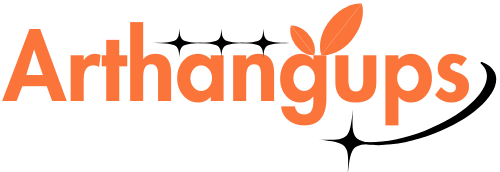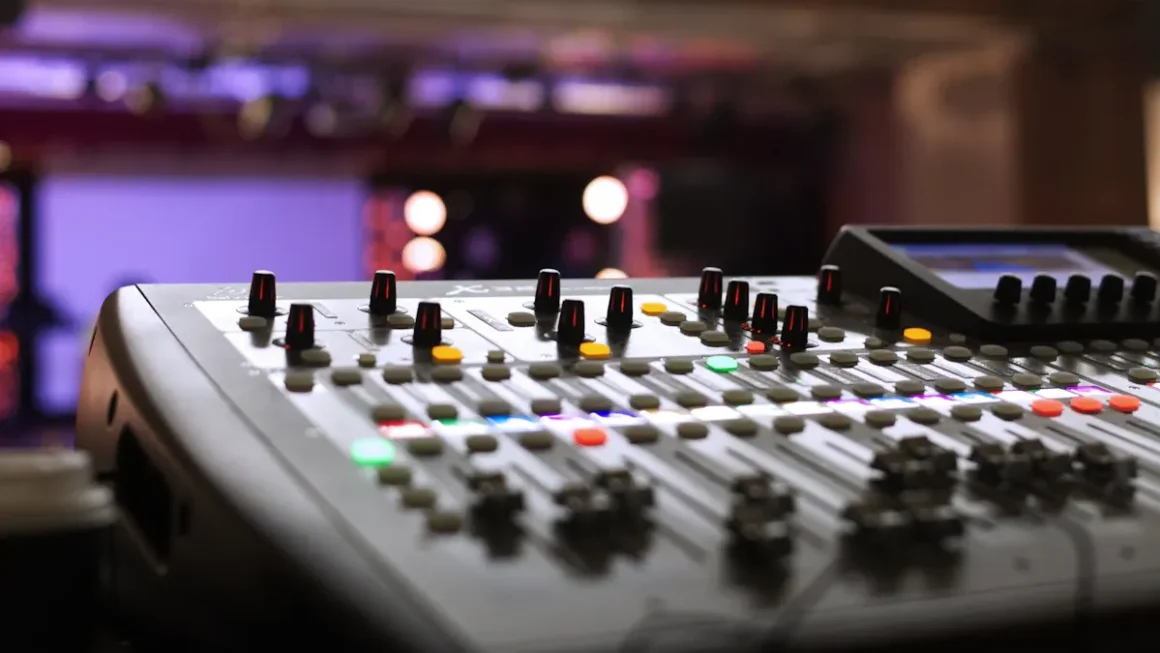Imagine listening to some of the most memorable music this week thanks to a fan-created tuna soundboard. It’s just as good as the ones professional tuners create.
Welcome to our spotlight on the community. It’s a fun tour of content created by users. We are focused exclusively on the United States audience. We’ll give you practical suggestions immediately.
People on Discord, Reddit, and Twitch create amazing voice mods for tunas. They make use of smooth cut-outs, tight loops, and intelligent triggers. There are stingers, meme drops, as well as crisp callsouts for podcasts, gaming, and live streams.
These boards, built by users, are distinguished by their clear audio and quick loading times. They make use of tools such as Audacity as well as Adobe Audition. These tools aid in enhancing the sound, eliminating noise, and help keep files lightweight for easy use.
You can expect a warm tone and clear instructions while you research. We’ll highlight the best options and provide quick criteria for selection. We’ll also help you understand legal, safe procedures. If you’re living in the United States and curious, this is the perfect starting point.
A Synopsis of Tuna Soundboards
Tuna Soundboards can add excitement to games, streams, and chats with a single tap. They play interactive tunes which are precisely timed. YouTubers, Streamers, and Discord acquaintances employ them to create fun and entertainment without disrupting.
What is a Tuna Soundboard?
Tuna Soundboard is a simple app or web panel. It plays short clips with a theme of tuna and effects or memes whenever you want. When you tap the button, the audio is played quickly. They include hotkeys, categories, and volume controls to make it quick and effortless to use during live events.
The Popularity of Tuna Voice Mod
Its Tuna Voice Mod provides speech with a unique turn by sounding like the sound of a tuna. It blends clean processing with unique flavors. It is a great match for TikTok memes and fast editing on YouTube Shorts. The stream is always active, and the reactions are sharp.
How Users Contribute to Soundboard Creation
The soundboards of fans are developed by the fans, making new material. The fans record their lines and cut the noises, add tags to clips, and upload the clips. Curators can then alter the levels, map hotkeys, and even add cross-fades. This helps to make Tuna Soundboards easy to use for gaming, chat, and live shows.
The Best Tuna Soundboards by Users
The public spotlight examines how users create Tuna, an easy tool for streaming and classes. The top soundboards blend sleek design and top quality audio. The result is that each sound is precise and crisp.
Overview of User-Created Soundboards
In Discord, Twitch, YouTube, and Reddit, the best soundboards are simple to use. They’re sorted according to the humor and effects, making them easy to use.
- They’re loud and consistent and have a clear sound without distortion.
- Download them as MP3 or WAV for various purposes.
- Mixable sets allow fans to make their own spin without having to start from scratch.
Notes such as “raid alert” or “classroom icebreaker” aid users in knowing the right time to play each sound. This makes soundboards useful and enjoyable right away.
Features That Make Them Stand Out
What makes a great board is the control and speed. Boards that have fast playback and simple controls will ensure that shows are on the right course.
- MIDI supports allow users to control sound with a controller that gives a tactile experience.
- Stream overlays display the clip’s name, helping users follow the stream.
- Smart ducking adjusts the music volume to ensure smooth transitions.
- A few random plays and a few surprises keep things interesting but not too complicated.
These features help top Tuna Soundboards shine in each neighborhood spotlight. They’re simple to begin with and provide endless opportunities for creativity.
How to Select the Best Tuna Soundboard
The search for the perfect soundboard begins by listening, but it’s not over until watching it perform. Take a look at some clips on the top soundboard websites. Also, look over the technical specifications that will ensure the sound is clear. This is crucial for creators who rely on user-generated content to ensure that their recordings and streams in good shape.
Assessing Audio Quality
- The ideal sample rate is 44.1 and 48 kHz to ensure clarity in music and voice.
- Select 192-320 kbps MP3 or lossless WAV to get crisp clarity.
- Examine a noise floor that is below 60 dB. Also, check for a stable dynamic range.
- Be aware of clicks, warbles or aliasing. Artifacts indicate poor editing.
- Find normalized levels and regular EQ to avoid jumping between clips.
Test it quickly: play soft then high-pitched clips in succession. If the volume is equal and no hiss is creeping into the sound, then the system is probably well-mastered.
Knowing Usability Features
- Rapid search, tags, and color-coded pads speed up live triggers.
- Favorites, hotkeys, and MIDI mappings allow for custom workflows.
- Per-clip volume and the start and end trims’ timing are to be adjusted at the moment.
- Integrating OBS, Streamlabs, or Voicemeeter helps improve live routing.
- Mobile-responsive layouts, as well as PWA support, allow creators to work on the move.
The features transform the tuna soundboards into useful tools instead of toys. They are especially helpful for switching between scenes or reacting in real-time.
Community Ratings and Feedback
- Compare stars, ratings, download count, and issue trackers to ensure stability.
- Learn more about latency as well as operating system support for Windows, macOS, and Linux.
- Active changelogs reflect regular repairs and maintenance.
- Clear licensing and versions of the packs help to build trust with content creators.
If content generated by users is the driving force behind a community-based platform, it helps to cut through the noise. The best websites for soundboards often highlight well-maintained packs. They work well inside tuna soundboards that are used for streaming and production.
Spotlight on Unique Tuna Soundboard Styles
The showcase of the community illustrates how the creators create the feel and sound that they produce. They ensure their soundboards are diverse and entertaining. The best soundboards have clear sound and fast responses to provide an engaging tuna sound experience.
Humorous Soundboards
It’s all about speed and memorable moments. A short sound that is less than 2 seconds can keep jokes fresh. The variety of sounds keeps things fresh.
These soundboards are grouped by moods, such as deadpan, slapstick, or. This makes it easier to keep the timing perfect in live streams and chats.
Creators examine the sound levels to ensure that they do not cause distortion. So, jokes sound clear and not too loud. This is all about wit and not just volume.
Dramatic Soundboards
Soundboards with dramatic reverberations are great for playing games and telling stories. They employ big sounds such as risers and whooshes in order to establish the mood. The sounds are arranged so that the voices are clearly heard when there is a lot of tension.
The soundboards are arranged according to emotion, such as anticipation or triumph. This allows hosts to add tension quickly. When paired with an interactive tune and a booming bass, they make for an exciting and thrilling experience.
Educational Soundboards
Educational soundboards are suitable for classrooms. They feature sounds for addressing students to pay attention, and for storing information. They are organized by the subject or activity, making them simple to incorporate into lessons.
A lot of soundboards have notes about the usage rights. This makes it easier for teachers to use them in the classroom. How they’re organized can help keep the classes flowing and interesting, particularly when they’re accompanied by an interactive sound effect from the tuna.
Creating Your Own Tuna Soundboard
Are you ready to make your tuna soundboard roar? This guide will assist you from beginning to end. Learn how to make your soundboards easy and enjoyable. You can add character using the tuna voice mod, or look for the top soundboards, ensure you follow a well-established procedure, and organize your files.
Tools and Software Recommendations
Editing and Repair: Audacity is great for editing and cleaning up the noise. To do more complex work, Adobe Audition or Reaper gives you precise control. The RX program from iZotope is ideal for eliminating unnecessary clicks and sounds.
Routing and recording: Voicemeeter Banana helps to mix your microphone as well as system audio and the Tuna voice mod. Record using OBS to monitor the volume and to avoid distortion.
Playback: Soundpad for Windows is great for quick sound effects. Jingle Palette, as well as Mixxx, are excellent to use for live performance. Web-based launchers are excellent for testing and use while on the move.
Delivering formats and format: Make use of 48kHz audio for the highest quality. Export MP3s with 320 kbps to ensure a balance between quality and size.
Tips for Recording High-Quality Audio
Pick a cardioid model such as the Shure SM58 or the Audio-Technica AT2020, which has pop filter. Make sure it is at least 6-8 inches from. Record in a space with the use of sound-absorbing materials to cut down on echoes or background sound.
Adjust the gain until your peaks are within -6 6dBFS. Utilize a high-pass filter at 80 Hz to eliminate low rumble. Reduce the volume a bit to keep levels equal, particularly when mixing using a tuna voice mod.
Normalize your sound to -14 LUFS to ensure constant volume. Record your audio in batches for uniform sound. Mark your recordings clearly to ensure easy management and access.
Community Engagement and Feedback
The community on the internet for soundboards is about sharing content quickly and easily, providing feedback. Creators publish user-generated content and encourage quick feedback. They also spotlight the work of their community and ensure that new products get tested as soon as they are released.
How Users Share Their Soundboards
Most creators post their work on GitHub, Google Drive, and soundboard platforms. They utilize tags audio previews, and the ability to version. This makes it easier for podcasters and streamers to set up their soundboards.
Feedback is always appreciated via Discord, Reddit, and issue trackers. Users report issues or request new content, and offer suggestions for more categories. The regular updates, polls, and policies for remix ensure that the content is always fresh, and make sure credit is given where it’s due.
The Role of Social Media in Promotion
Short videos help people discover new soundboards. TikTok, YouTube Shorts, and Instagram Reels showcase hilarious moments and demonstrations. Twitch streamers credit their viewers in panels, while Twitter threads provide suggestions for soundboards to come.
These platforms aid in helping the community of soundboards expand beyond forums. Timely posts, with precise credits and clear tags, ensure that each spotlight is seen by the appropriate people. So, the community is always lively and active.
Highlighting User Contributions
The spotlight of the community is brightest when practical concepts are paired with meticulous craft. Creators from Discord servers as well as Reddit threads work to refine the soundboards for podcasts, streams, and classroom demonstrations. They stand out because they address real issues and sound clear.
Story of Success from the Creators
The best tuna soundboards have found homes at Twitch as well as YouTube. Streamers utilized them for live pieces as well as alerts. Downloads rose, and creators were invited to collaborate to create a new pack.
They were issued better tags and more efficient triggers. Open licenses, such as CBY 4.0, helped credit the original creators.
Creators offer round-trip latency test results and LUFS targets. This allows others to make comparisons between attack speeds and levels with certainty. If sets include session notes and guidelines, novices can use them within OBS as well as Streamlabs.
This clearness keeps the focus on those who document their processes.
Notable Features by Individual Users
- The pads are optimized for latency and load clips into RAM to ensure immediate playback as well as tighter comedy timing.
- Templates for MIDI specifically designed for the Akai MPD218 mapping pads to scene-specific fast fades and stingers.
- OBS source for browsers that animated when triggered, providing visual feedback to live audiences.
- Localization packs that include tags and humor that are specific to the region, to expand access without disrupting the timing.
- Style guides that define the noise floor, fade curves, and limiter settings provide consistency in the sound quality.
Clear credits and transparent sourcing enable remixing while still respecting the original. This process transforms the top tuna soundboards into standard. This keeps the top tuna soundboards visible in all community spotlights.
Expansion of Tuna Soundboard Use Cases
Tuna soundboards are more than toys. They’re becoming tools for everyday life. Creators mix dynamic tuna sounds with real-time controls and make them sound natural in a variety of settings. The online community of soundboards is constantly growing, providing easy-to-follow presets and quick-start instructions.
Using Soundboards in Gaming
In games, the tuna soundboards bring excitement to crucial moments. They are compatible when combined with Discord and push-to-talk, keeping the channels of voice free of clutter. The players use them to play games of roleplay or to announce the need for changes to their game’s strategy.
- Hotkeys for mapping on a Stream Deck or MIDI controller to make quick hits.
- Make sure you have a small bank of winning tags as well as tactical cues and some light banter.
- Test levels so effects sit under comms during heated rounds.
These practices are what make sound effects that are interactive part of the group. As the clips are shared across the online community, soundboards release new packs for every season.
Applications in Education and Training
Instructors utilize tuna soundboards to indicate transitions and reward quick responses. They can also help to strengthen memories with consistent sound. The short tones signal shifts in the group or the start of a quiz, whereas the warm chime signals achievement.
- Create sets according to the unit: intro tones, recall cues, and review prompts.
- Utilize clear, short effects to help focus rather than distracting.
- To facilitate corporate training, you can add feedback pips for simulations as well as energy resets.
Simple labeling and presets for scenes assist new facilitators in following the same pattern. The online community of soundboards has shared libraries, ensuring the same soundboard content for teams.
Fun in Online Streaming
Streamers utilize tuna soundboards to create memorable experiences. Channel points can trigger fun sound effects, and OBS audio ducking will ensure that dialogue is crystal clear. Seasonal packs ensure that content is always fresh and current.
- Affix staples to the Stream Deck row for muscle-memory timing.
- Balance levels create pop without overwhelming music or vocal.
- Record scenes and shortcuts so that guests can join quick.
With perfectly tuned audio tunas that are interactive, the timing is flawless. The tips received from the online community of soundboards assist creators in improving their speed and polish.
Interactive Elements of Tuna Soundboards
The great boards feel alive. Creators transform basic clips into live tuna sounds by letting the fans decide the way they play. In a lively online community of soundboards, feedback guides the features and ensures that sessions are always fresh across classrooms, streams, and game evenings. This is how the most effective creations by users develop.
Incorporating User Plan
Ideas are generated through forms, polls on Twitter/X /X/X, and with Discord suggestions channels. Curators prioritize requests according to need and the possibility of a solution and then put up the most requested bites first. Shortlists allow you to develop new clips faster, so the online community of soundboards receives the results instantly.
Play data is crucial. Simple dashboards help you identify the top performers and flag weak takeaways, and provide guideline updates. This loop ensures that custom-designed soundboards remain tuned to the environment and maintain active tuna sounds current.
Dynamic Soundboard Features
Smart controls provide variation and flow. Randomizers mix repeats, while cooldown timers reduce excessive. Sidechain and per-clip EQ take advantage of the music bed to ensure that every hit is clean. The options for tail-trim and crossfade smooth the edges for fast smooth transitions.
The performance tweaks add an extra dimension. Parameter knobs allow you to alter attacks and decays, change the pitch at will, or flip the soundboard in reverse to create an exciting punchline. These controls take live tuna sounds from simple playback to lively expression within custom-designed soundboards created by users.
- Accessibility first: keyboard navigation to speed
- ARIA labels for screen readers. Clear ARIA labelling for screen readers
- Captions that ensure that every cue is a success.
The inclusive design allows new creators and listeners to join the online community of soundboards and makes each session smoother and each update more efficient.
Risks for Copyright and Privacy
Creators should consider privacy and rights while creating tuna soundboards. Each video should be well-documented. This ensures that content is safe to share on websites such as YouTube or Twitch.
Protecting User-Generated Content
Select a clear license to use your audio boards. Make use of the CC BY-NC license to allow broad use with an attribution clause or the CC BY-NC for remixing, but not for commercial use. Include a README with the author as well as attribution and remix guidelines.
Keep hashes or versions for each file in order to prove the origin of the file. Record permissions and sources, such as dates and contacts. If someone is not happy, ask to delete the content, and then respond swiftly to DMCA notices. Utilize original recordings or material from the public domain to avoid copyright concerns.
Knowing Fair Use Policies
Within the U.S., fair use is based on its purpose, the nature of the content, and the market impact. Clips that are short, transformative, and intended to critique or parody may be legal. However, not every meme or quote is considered fair game.
In YouTube and Twitch, Takedown systems have been put in place. Keep records of your change and the attribution of disputes. Making use of authentic audio, sources from the public domain and clear licenses can help to avoid issues.
Future of Tuna Soundboards
The next major thing to come out of Tuna Soundboards will be all about quality, speed and collaboration. Designers are looking for tools that operate quickly and have clean audio. They also need to easily share their work across various devices.
The online community for soundboards is setting the standard. They’re always testing new ideas and receiving quick feedback. This can help everyone enhance their soundboards.
Trends in Soundboard Creation
AI helps clean up the clips, taking out any noise, while preserving the persona. Automated leveling of loudness ensures that audio quality is high in games and live streams. Smart tagging makes it simple to locate sounds in large collections.
Web technologies such as Web Audio API and WASM make soundboards more responsive within browsers. PWA packaging converts soundboards to apps that can be used on a variety of devices. MIDI 2.0 allows creators to make use of musical controls to create a more natural-sounding.
The Tuna Voice Mod scene is about adding character to soundboards. The creators make use of techniques like subtle tone variations and dynamic filters. These are great for adding an extra dimension to podcasts as well as Twitch streams and Discord chats.
The Role of Community in Evolution
The online community for soundboards establishes guidelines for how soundboards must collaborate. They have clearly defined names for LUFS goals, as well as an open template. This allows creators to collaborate and exchange ideas.
Collaboration using Discord and GitHub helps speed up the process of creating new soundboards. Creators are able to get feedback from actual users and adjust their designs in response to the feedback of users. This keeps the world of tuna voice mod new and exciting for everyone.
Conclusion
This Community Spotlight on: Top Tuna Soundboards Designed by users demonstrates the strength of collective creativity. Creators are constantly pushing the boundaries of their work. They show us how little modifications, clear labels, and fast updates can make a huge impact.




